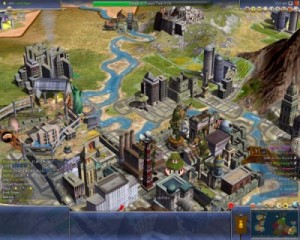3.3: Implementation and Institutionalization
“Implementation is using instructional materials or strategies in real (not simulated)settings. Institutionalization is the continuing, routine use of the instructional innovation
in the structure and culture of an organization” (Seels & Richey, 1994, p. 47). The
purpose of implementation is to facilitate appropriate use of the innovation by individuals
in the organization. The goal of institutionalization is to integrate the innovation within
the structure and behavior of the organization.
Three Articles on Professional Development Models
0I evaluated a few different professional development models. Even though the district does a lot to train faculty and staff, there’s still a lot of improvement we can make to our district’s professional development opportunities. We could also gather better statistics on the effectiveness of our existing professional development.
There are four main venues of PD in our district. We have an online self-directed learning portal, two site-based PD programs — one for administrators, one for teachers, and an annual [site-based] summer conference where hundreds of our district’s teachers and administrators come for intensive workshop-based training on a variety of technology tools. I realize the value of ongoing professional development. Teachers should not simply learn something then not have it reinforced. While self-motivation is essential for any teacher’s PD, districts should also find ways to create learning opportunities that directly benefit their careers.
I don’t think our teachers have responded that well to our online inservice portal, though that’s largely because of a lack of summative evaluation and revision in the instructional material. This will need some revising before it gets to an acceptable state. I’d also like to explore more models of professional development and put them to use in our district. One particular PD model is almost completely unused: live web conferencing. The state provides everyone with free Wimba accounts, but no one I’m aware of even uses them. I’d like to start organizing weekly/biweekly live professional development sessions just for our employees, perhaps during prep hours or after school is released.
Three Professional Development Models
Duncan-Howell, J. (2010). Teachers making connections: Online communities as a source of professional learning. British Journal of Educational Technology, 41(2), 324-340. doi:10.1111/j.1467-8535.2009.00953.x
The author, Jennifer Duncan-Howell, discusses the benefits of online communities for professional development. Social networking is a valuable model for professional development, and has increased the depth of online learning available to teachers. This article shares the results of a study on three online learning communities, and demonstrates that teachers can benefit from engaging community-oriented learning environments, as 86.7% of the teachers surveyed considered their online communities a valuable form of professional learning.
There’s a few good things to think about in this article. My district could be doing a lot more to involve teachers in online communities. I set up a Moodle-based forum a couple years ago for all our district’s teachers and administrators, but there is only about one new post every other month. This seems unacceptable coming from a district with 1500+ teachers. A potential goldmine of collaborative information is sitting there, unused. Few will disagree that being connected to like-minded educators is absolutely invaluable for teachers. Being able to stay on top of emerging trends, and share resources, lesson plans, ideas for integrating technology into the classroom, inservice opportunities, and strategies for engaging students are important. The problem is, many teachers don’t realize they can establish a venue of collaboration outside the walls of their own school. Teachers should realize they don’t have to work inside a box, and that there’s a worldwide learning network out there waiting for them, filled with thousands of educators willing to step in and help them out.
Mushayikwa, E., & Lubben, F. (2009). Self-directed professional development: Hope for teachers working in deprived environments? Teaching and Teacher Education, 25(3), 375-382. doi:10.1016/j.tate.2008.12.003
This article explores self-directed learning in technologically underprivileged educational systems, specifically among teachers in Zimbabwe. I was particularly interested in the comments made by the teachers, as they share how they currently use technology for learning (e.g. using email because they lack travel funds to come together in groups, using the Internet to make lesson plan organization easier), and the concerns behind self-directed professional development. The model presented in the article is really a model of concerns. It first addresses the basic needs of feeling that professional learning and collaboration is worthwhile in the first place, followed by concerns over career development and content knowledge. When these are met, the teacher is guided toward professional efficacy and efficacy in their classroom, and finally becomes an effective teacher.
This article made me think about our own school district’s self-paced inservice site. It’s Moodle-based, and teachers can use it to earn state certification credit. I didn’t design any of the courses — one of our techs did — and now after several weeks in my instructional design class now I’m starting to notice that the courses could be developed much better. There were no needs or learner analyses conducted when the courses were created, and there’s no form of evaluation on the effectiveness of the learning. I’ll need to get more involved in the instructional design process for our online learning opportunities, and use what I’ve been learning about to benefit my district’s teachers. There is much more to professional development than simply providing a few training exercises and a printable, pixelated certificate they can hang on their wall.
Gerber, B. L., Brovey, A. J., & Price, C. B. (2001). Site-based professional development: Learning cycle and technology integration. Retrieved from http://www.eric.ed.gov/ERICWebPortal/contentdelivery/servlet/ERICServlet?accno=ED472987
This article intrigued me because it directly analyzes how professional development impacts not only teachers, but students as well. The authors approach the study from an empirical perspective: “Students learn most readily about things that are directly accessible to their senses – tactile, kinesthetic, visual, and auditory. Teaching should be consistent with the nature of scientific inquiry” (Gerber et al., 2001, p. 6). The authors also make a good point when they write, “Cognitive research strongly suggests students know less than we think they do following instruction. The quality of student understanding should be emphasized rather than the quantity of information presented” (Ibid).
Following this particular study, teachers reported that students were finding more ways to foster their own creativity, were more inquisitive in the learning process, and that their mutual relationships with their teachers improved significantly.I think more studies like this would be worthwhile, because sometimes we forget that the final intended beneficiary of any professional development opportunity is not the teacher, but ultimately the student. Professional development should help teachers become better at their job, and in return students should benefit from the extra skills and techniques the teacher has developed.
Exploring Some Technology Trends
0Reading through the 2010 Horizon Report, I learned about a few things I wasn’t too familiar with. I first heard about augmented reality a couple years ago from this article in THE Journal: http://thejournal.com/articles/2008/02/01/when-worlds-collide-an-augmented-reality-check.aspx. The idea of encouraging students to apply what they’ve learned in a real-world simulation really struck a chord with me, but I never had a chance to explore augmented reality on my own until now. Many of the mobile AR apps mentioned in the report were for the iPhone, and I’m a die-hard BlackBerry user, so I switched to web-based tools and loaded up Unifeye.
This is really quite slick. I think augmented reality has great potential in the classroom. What’s more, it can lead to engaging hands-on activities that go beyond the two-dimensional computer screen most of us are used to. I watched a YouTube video one of my classmates posted about AR being used to teach chemistry: http://www.youtube.com/v/iT2ek8N0VlY. It actually reminds me of all the virtual reality hype back in the 1980s, and how the future would all be immersed in virtual reality. I don’t think we’re quite there yet (the current reality’s just fine), but this opens quite a few doors, especially if the simulations are done in 3d space. Imagine, for example, being able to teach medical students how to perform surgeries on a plastic cadaver, with AR showing all the incisions and sutures.
What I would like to see is an open source framework that makes it possible for K-12 teachers to easily create their own AR scenarios. It should be compatible with any PC or smart phone, and users should be able to select from a range of templates that have different features like GPS geocaching, setting up interactions with a simple graphical scripting engine, the ability to share AR programs with others through a central repository, and anything else that might be useful for educators.
I also tried out Google Sketchup, and I’m kind of shocked that I skipped over this until now, because it has enormous potential. I’ve seen the models in the 3d warehouse and plenty of Sketchup projects made by educators. I love how easy it is to import models directly into the program, though it doesn’t integrate very well with other applications like 3d Studio Max or Maya unless you have the Pro version. Student discounts are available, though: http://sketchup.google.com/industries/edu/students.html
All this particularly interests me because our district has been exploring the possibility of setting up our own virtual world server. The first time I heard about virtual worlds was in reference to Harvard’s “River City Project” cited, again, in an article in THE Journal: http://thejournal.com/articles/2006/09/01/educational-gaming–all-the-right-muves.aspx. Most teachers I find familiar with virtual worlds take exception to referring to them as “games” but I don’t think students know the difference. Right now, I see them as potential extensions of online learning systems, where teachers can interact directly with students in a secure space, but give them a lot more options. For example, drafting students could bring their blueprints to life and create architectures within the virtual world. Students could participate in virtual science fairs. What’s more, a school or district could have a public area showcasing the best work from their students.
 Gaming is an activity enjoyed by many students, and when used for educational purposes, games can improve student motivation towards learning, particularly when used in the creation of constructivist learning opportunities. Applying constructivist principles to educational game-based learning activities yields an approach that puts students in the role of active learners and content creators.
Gaming is an activity enjoyed by many students, and when used for educational purposes, games can improve student motivation towards learning, particularly when used in the creation of constructivist learning opportunities. Applying constructivist principles to educational game-based learning activities yields an approach that puts students in the role of active learners and content creators. A few months ago, I co-founded a project called Digital Parent with a few other educators across North America. The goal of Digital Parent is to deliver technology workshops for parents. The basic idea is to help parents better understand technology, and provide training that will benefit them as they seek to understand the benefits of educational technology, as well as technology tools relevant to their personal lives. The project is still in its formative stages, and although we’ve been on hiatus for awhile, I’m hoping with this new instructional project I’ve designed we can get the project moving again.
A few months ago, I co-founded a project called Digital Parent with a few other educators across North America. The goal of Digital Parent is to deliver technology workshops for parents. The basic idea is to help parents better understand technology, and provide training that will benefit them as they seek to understand the benefits of educational technology, as well as technology tools relevant to their personal lives. The project is still in its formative stages, and although we’ve been on hiatus for awhile, I’m hoping with this new instructional project I’ve designed we can get the project moving again.